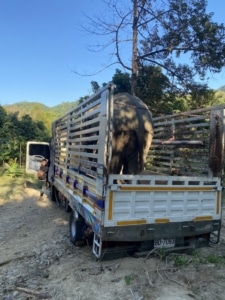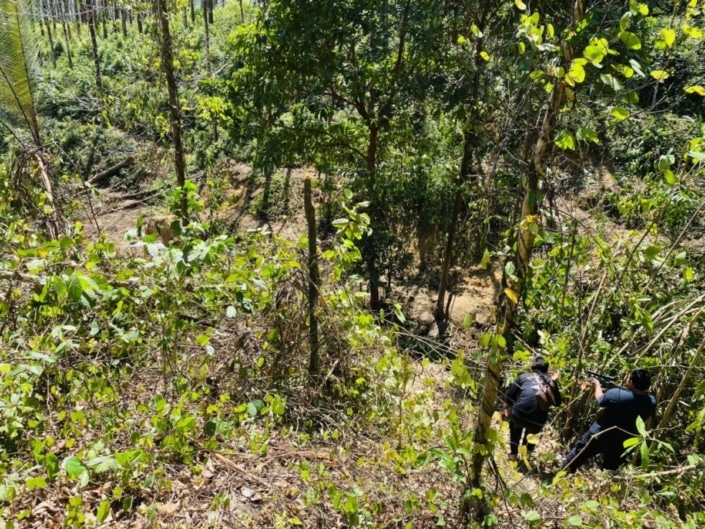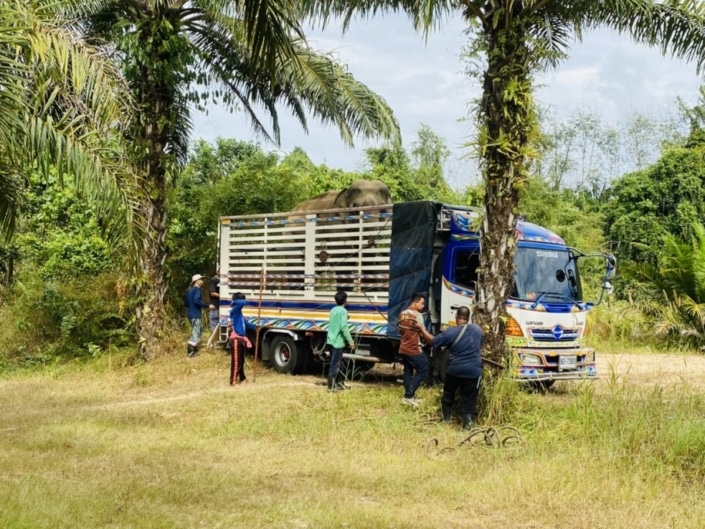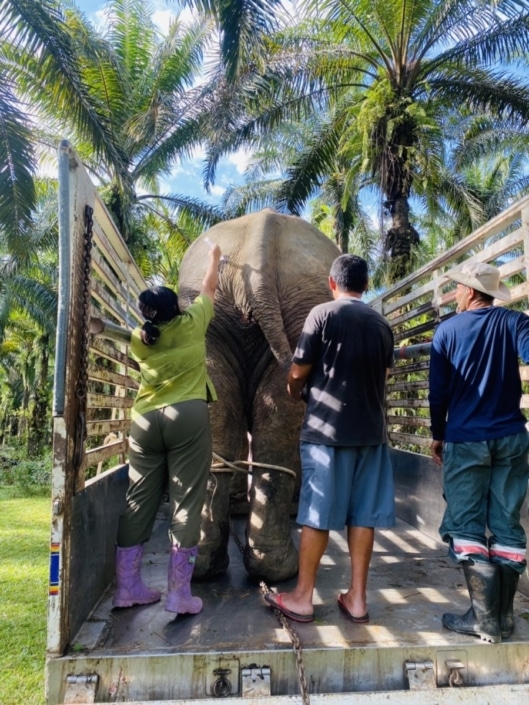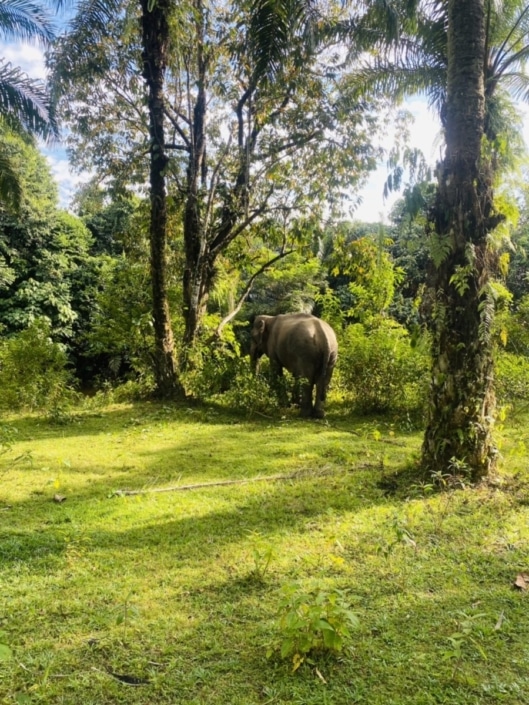A large bull elephant in musth is finally loaded onto a truck for relocation
Mobile clinic visits don’t always go according to plan. Our Vet, Dr Aon, was recently called out to help the Krabi Hospital team re-locate two bull elephants closer to their owner’s home. The reason for the move was that both elephants had come into musth, so the owner needed to keep an eye on them. With heightened testosterone levels, elephants in musth are often unpredictable and potentially dangerous.
So, in order to move the elephants safely, they first had to be given a veterinary sedative called xylazine which was administered with the use of a dart gun. All went well with the first of the two bulls, but on the following day, when the veterinary team came to move the second bull, a number of over-enthusiastic people had turned out to help. They made a lot of noise which upset the elephant, and he became anxious and agitated, making it very difficult for the vets to accurately use the dart gun. With patience they eventually managed to tranquilise the elephant safely, and soon he was calm enough to be happily transported.
On arrival at their new destination, the elephants were immediately given a dose of yohimbine+atipamezole to rapidly reverse the effects of the sedative.
Fortunately for elephant owners, musth usually happens only once a year. It is a natural phenomenon seen in healthy adult bull elephants from the age of 15 years upwards. During musth there is an enlargement of the temporal glands (on either side of the elephant’s head) and the animal becomes easily irritable, mischievous and over-sensitive to sounds. These bulls also have a tendency to disobey their mahouts! [1]. It was fortunate that Dr Aon was there as part of an experienced vet team to ensure this challenging manoeuvre was successfully accomplished.
[1] Zoo’s Print Journal (Researchgate)
[Click on photos below to enlarge]

